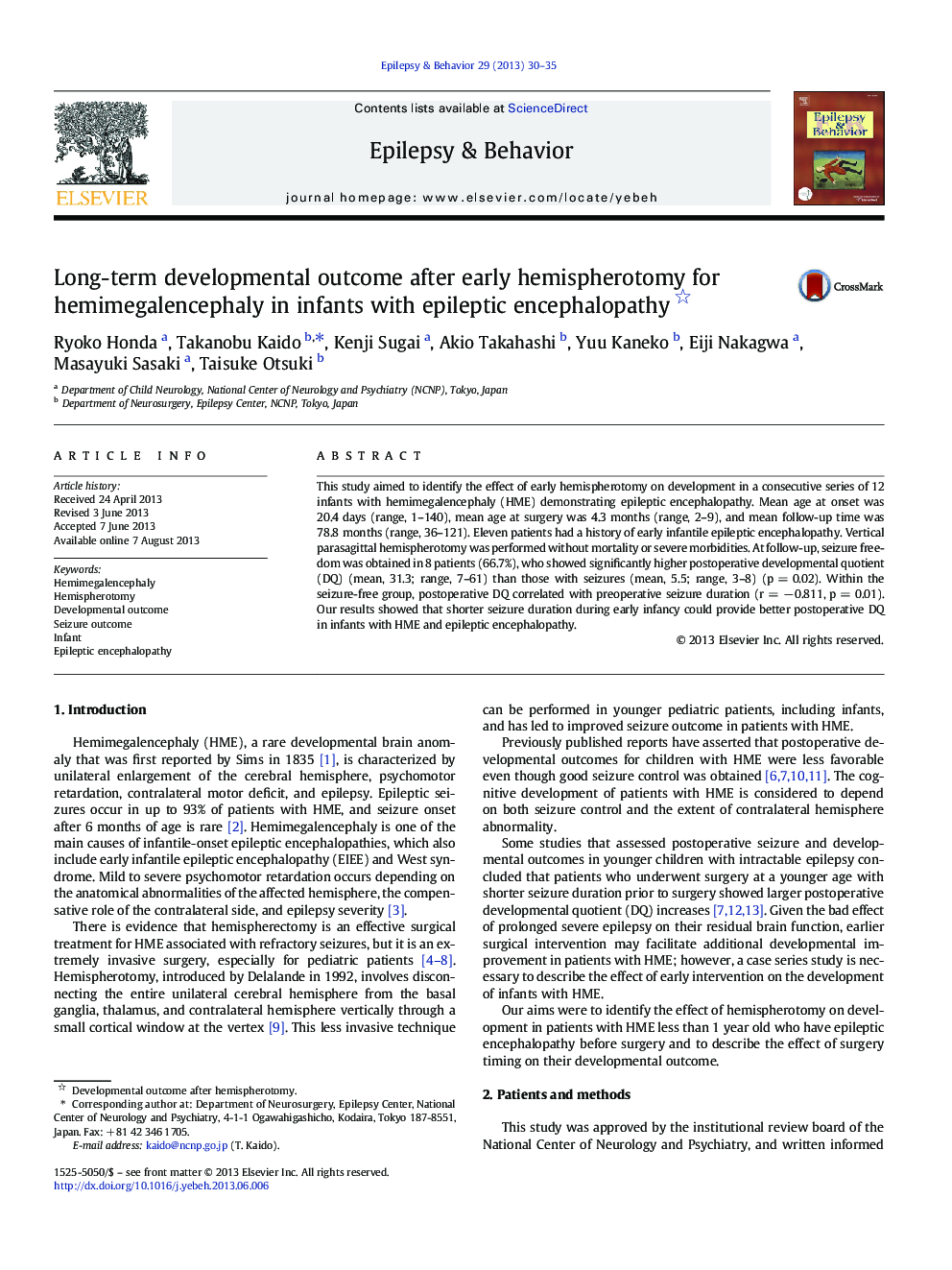| Article ID | Journal | Published Year | Pages | File Type |
|---|---|---|---|---|
| 6013050 | Epilepsy & Behavior | 2013 | 6 Pages |
â¢Developmental outcome of infants with HME who underwent hemispherotomy at less than 1 year of ageâ¢All patients had a history of epileptic encephalopathy before surgery.â¢Patients who obtained seizure freedom after surgery showed higher postoperative developmental quotient (DQ).â¢Shorter seizure duration was correlated with higher postoperative DQ.â¢Appropriate surgery timing may facilitate additional developmental improvement.
This study aimed to identify the effect of early hemispherotomy on development in a consecutive series of 12 infants with hemimegalencephaly (HME) demonstrating epileptic encephalopathy. Mean age at onset was 20.4 days (range, 1-140), mean age at surgery was 4.3 months (range, 2-9), and mean follow-up time was 78.8 months (range, 36-121). Eleven patients had a history of early infantile epileptic encephalopathy. Vertical parasagittal hemispherotomy was performed without mortality or severe morbidities. At follow-up, seizure freedom was obtained in 8 patients (66.7%), who showed significantly higher postoperative developmental quotient (DQ) (mean, 31.3; range, 7-61) than those with seizures (mean, 5.5; range, 3-8) (p = 0.02). Within the seizure-free group, postoperative DQ correlated with preoperative seizure duration (r = â 0.811, p = 0.01). Our results showed that shorter seizure duration during early infancy could provide better postoperative DQ in infants with HME and epileptic encephalopathy.
